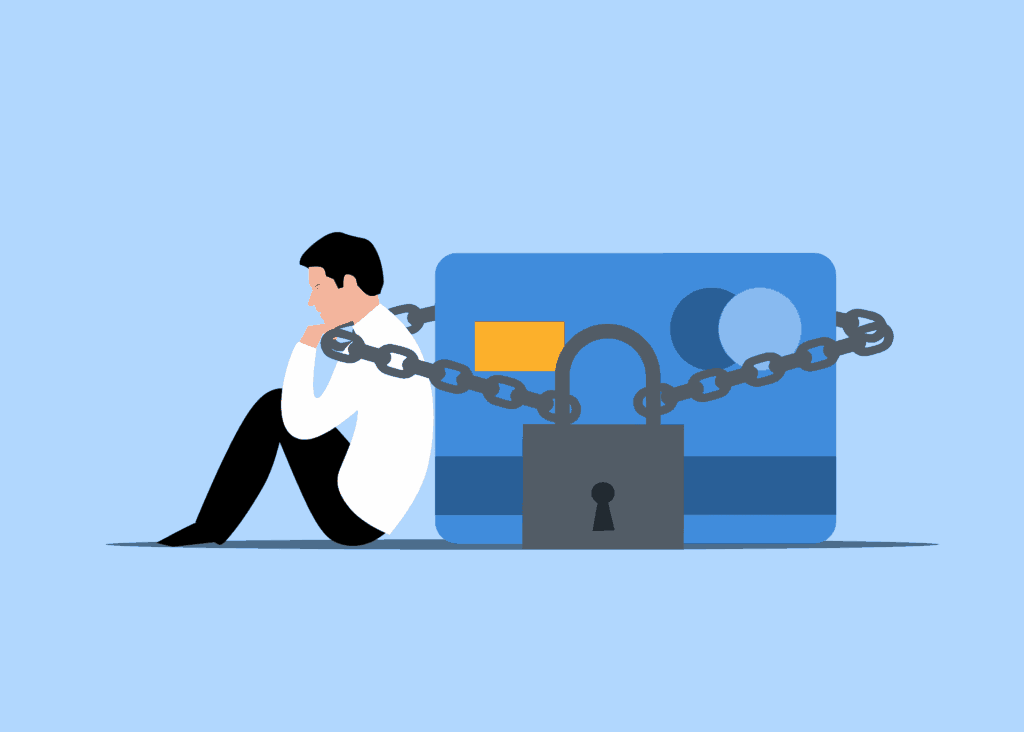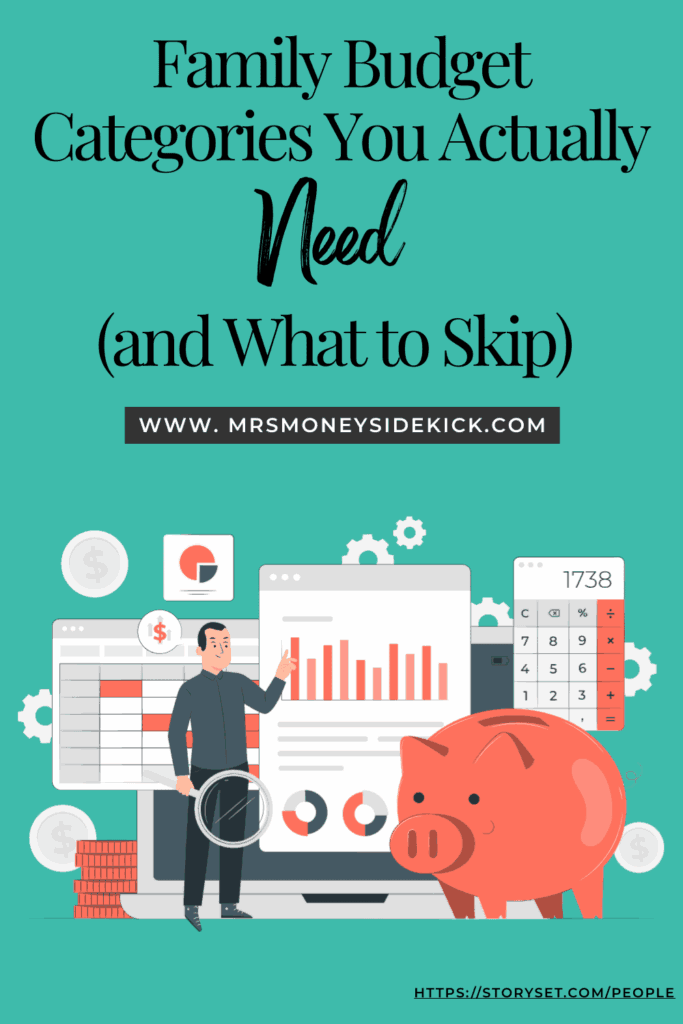Family Budget Categories You Actually Need (and What to Skip)
When you’re trying to create a budget for your family, it can be overwhelming. There are endless “perfect templates” online telling you what to include, but honestly? Not every family budget category makes sense for your real life. Today, we’re breaking down the family budget categories you actually need — and the ones you can probably skip (at least for now).
Because the truth is: a budget should feel helpful, not like a strict to-do list that stresses you out. When you’re setting up your family budget, it’s smart to break your major categories into smaller subcategories whenever you can. It might feel like a little more work upfront, but it gives you much better visibility into where your money is actually going. Tracking subcategories help highlight opportunities to cut back if needed, like noticing if your electricity bill suddenly spikes or if dining out is sneaking up more than you realized.
That said, if breaking down feels overwhelming right now, it’s completely fine to stick to the bigger categories to start. The most important thing is to create a system you’ll actually stick with. You can always refine it later as you get into the rhythm!
When my husband and I first started budgeting as a family, we thought we had everything figured out. Rent? Check. Groceries? Check. Utilities? Check. But within the first month, reality hit. We completely forgot about things like birthday gifts, pet’s emergency vet visits, even all the random Amazon orders that somehow kept happening. At the same time, we were trying to budget for things we didn’t even need yet, like a “new furniture” fund when our hand-me-downs worked just fine. It took a lot of trial and error, but we eventually learned that a real, flexible budget focuses on what you actually need right now, not what looks good on paper.
Whether you’re just starting or you’re trying to clean up your current budget, here’s how to focus on what matters most.
1. Housing (Non-Negotiable)
Housing is always at the top of family budget categories you actually need. Rent or mortgage, property taxes, HOA fees and home/renters insurance must be included.
2. Utilities and Bills
Utilities like electricity, gas, water, trash, internet, and phone are essentials you can’t skip. Even if you don’t have a lot of bills yet, expect these to show up month after month.
✅ Pro-tip:
- Always call your internet company once a year to ask if there are any promotions or lower rates available. Sometimes they have deals that aren’t publicly advertised, but the answer is always no if you don’t ask!
Even if they say no this year, it’s worth the quick call. You could save $10–$30 a month just by asking. - Watch each line. If your water bill spikes, it could be a leak. Higher electricity bills? Try running appliances during off-peak hours or adjusting your thermostat habits.
3. Food (Groceries + Dining Out)
Food deserves a solid spot in family budget categories you actually need. Groceries are obvious, but realistically, most families will eat out sometimes too — and that’s perfectly okay.
✅ Pro-tip: When my husband and I first combined finances, we also created a “work lunch” subcategory.
We each had an allowance to spend on lunch outings or happy hours with coworkers. Social life at work is important too and having a category for it helped us stay realistic without guilt. If you don’t have fully combined finances, you might not need to track it this way, but if you do, it’s a smart detail to add!

4. Transportation
Transportation isn’t just gas. It’s insurance, car payments, maintenance, and car registration fees too. Even if you don’t drive much, you’ll want to budget for future repairs or inspections.
✅ Pro-tip: Set aside a little extra every month in a car maintenance sinking fund. Tires, batteries, and surprise repairs always pop up when you least expect it.
5. Childcare, School, and Kid Costs
If you have kids, this is one of the family budget categories you actually need to think through carefully.
Costs add up quickly for daycare, after-school programs, field trips, class parties, and even things like art supplies or team sports.
✅ Pro-tip:
- Budget separately for “regular” childcare (like daycare) and “random” school-related expenses (like fundraiser donations or birthday party gifts).
- Even $20–$50/month set aside for these extras can save you from scrambling later.
6. Insurance (Health, Life, Disability)
Insurance is one of the most important family budget categories you actually need, even if it’s not exciting to plan for. Most employers offer basic health insurance, but what about life insurance?
✅ Pro-tip: That’s why it’s smart to buy your own term life insurance, locking in coverage for a set time at an affordable rate to protect your family no matter what. (We’ll dive into more life insurance details later, but keep it on your radar!)
Many companies offer free basic life insurance, usually about 1-2x your annual salary. It’s great to have, but if you change jobs or lose your job, that coverage usually disappears.
7. Debt Payments

Credit cards, student loans, car loans, etc. Debt payments are definite one of the family budget categories you actually need if you have debt. Make each one it’s own subcategory.
✅ Pro-tip:
- After you build a starter emergency fund, paying off debt fast should be a top priority.
- Saving and investing is great, but the return on your savings won’t beat the high interest rates you’re paying on most debts.
Aggressively attacking debt now gives you way more financial freedom later.
8. Healthcare
Healthcare expenses pop up even if you have great insurance (copays, prescriptions, dental, vision, and over-the-counter needs like cough medicine.)
✅ Pro-tip: If you’re eligible, consider getting a high-deductible health plan with an HSA (Health Savings Account).
- HSAs are amazing tools:
- You can invest some HSA money and use it way later for medical costs
- You can even reimburse yourself later for old receipts whenever you want, no time limit! Just save your receipts carefully.
- Contributions are tax-free
- Growth is tax-free
- Spending on qualified medical costs is tax-free
- Plus, an HSA can cover various things like contact lenses, cough medicine, menstrual products, and many more! Check the full list from your health plan.
9. Personal Spending and Entertainment
Life isn’t just bills. You need to plan for fun too! Even if it’s a small category, budgeting for personal spending (like hobbies, shopping, and streaming services) is critical for sticking to the bigger plan without feeling miserable.
✅ Pro-tip: Agree on a reasonable monthly allowance with your spouse if you share finances. It avoids guilt trips and fights, whether it’s buying video games or spontaneous HomeGoods runs.
10. Savings
Even though savings isn’t a traditional “expense,” it is absolutely something you want to track just like a bill because you’re paying your future self. Here’s why:
- It builds the habit of prioritizing savings first, not just saving “what’s left over.”
- You can easily see how much you’re saving every month (or if you accidentally start skipping it).
- You can adjust based on different goals (emergency fund, travel, big purchases, investments).
If you’re using subcategories, adding a few savings goals make it easier to adjust and shift when life changes, just like you would with groceries or utilities. If you’re keeping it simple, you could just have one lump “Savings” category for now, and break it out later once you build the habit.
Here are some examples of subcategories under Savings to track:
- Emergency fund
- Retirement (401K, IRA)
- Travel fund
- Home down payment
- Big purchases (ex. new laptop, car fund)
- Kids savings/education fund (if applicable)
- HSA (Health Savings Account) if you manually contribute
- Other long-term goals

Bonus: Pet Expenses
If you have a furry family member, don’t forget to add a Pet Expenses category! Include: food, medicine, grooming, vet checkups, surprise emergency costs. Having a little monthly budget set aside can save a lot of stress when those unexpected vet bills hit.
Family Budget Categories You Can Skip (For Now)
- Big Clothing Budgets: Unless your career demands it, most people don’t need new clothes every month.
- Overloaded Subscription Services: Netflix? Sure. Netflix + Hulu + HBO + Apple TV + Disney+? Maybe not.
- Luxury Expenses: Like wine clubs, subscription boxes, or extra memberships. They’re fun, but not essentials.
Final Thoughts: Family Budget Categories You Actually Need
The family budget categories you actually need aren’t set in stone.
Build a budget that grows with you.
Life changes. Careers grow. Kids get busier. Medical costs pop up. Expenses shift.
A real, working budget isn’t a one-time task: it’s a living, breathing thing you check in on.
✅ Pro-tip: If budgeting gets tight, small savings can often be found by looking at subcategory trends, without feeling like you’re depriving yourself.
- Check your budget monthly or quarterly.
- Ask yourself:
- What’s working?
- What’s stressful?
- Any new expenses popping up?
- Are you meeting your savings goals?
- Is there any unnecessary spending to cut?
- Adjust and reallocate money where needed.
Your budget isn’t about perfection. It’s about awareness, freedom, and giving your family the best chance to thrive.
On your side,
Mrs. Money Sidekick
P.S. Interested in more real-world tips on family finances? Check out our Family Finances posts for even more help to building your financial foundation together!
Featured Image by People illustrations by Storyset








